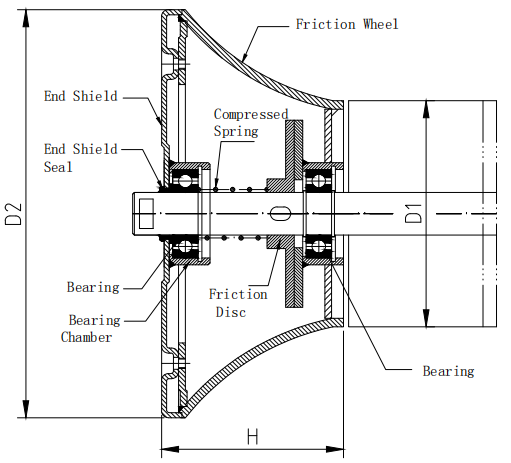 Afrikaans
Afrikaans  Albanian
Albanian  Amharic
Amharic  Arabic
Arabic  Armenian
Armenian  Azerbaijani
Azerbaijani  Basque
Basque  Belarusian
Belarusian  Bengali
Bengali  Bosnian
Bosnian  Bulgarian
Bulgarian  Catalan
Catalan  Cebuano
Cebuano  Corsican
Corsican  Croatian
Croatian  Czech
Czech  Danish
Danish  Dutch
Dutch  English
English  Esperanto
Esperanto  Estonian
Estonian  Finnish
Finnish  French
French  Frisian
Frisian  Galician
Galician  Georgian
Georgian  German
German  Greek
Greek  Gujarati
Gujarati  Haitian Creole
Haitian Creole  hausa
hausa  hawaiian
hawaiian  Hebrew
Hebrew  Hindi
Hindi  Miao
Miao  Hungarian
Hungarian  Icelandic
Icelandic  igbo
igbo  Indonesian
Indonesian  irish
irish  Italian
Italian  Japanese
Japanese  Javanese
Javanese  Kannada
Kannada  kazakh
kazakh  Khmer
Khmer  Rwandese
Rwandese  Korean
Korean  Kurdish
Kurdish  Kyrgyz
Kyrgyz  Lao
Lao  Latin
Latin  Latvian
Latvian  Lithuanian
Lithuanian  Luxembourgish
Luxembourgish  Macedonian
Macedonian  Malgashi
Malgashi  Malay
Malay  Malayalam
Malayalam  Maltese
Maltese  Maori
Maori  Marathi
Marathi  Mongolian
Mongolian  Myanmar
Myanmar  Nepali
Nepali  Norwegian
Norwegian  Norwegian
Norwegian  Occitan
Occitan  Pashto
Pashto  Persian
Persian  Polish
Polish  Portuguese
Portuguese  Punjabi
Punjabi  Romanian
Romanian  Russian
Russian  Samoan
Samoan  Scottish Gaelic
Scottish Gaelic  Serbian
Serbian  Sesotho
Sesotho  Shona
Shona  Sindhi
Sindhi  Sinhala
Sinhala  Slovak
Slovak  Slovenian
Slovenian  Somali
Somali  Spanish
Spanish  Sundanese
Sundanese  Swahili
Swahili  Swedish
Swedish  Tagalog
Tagalog  Tajik
Tajik  Tamil
Tamil  Tatar
Tatar  Telugu
Telugu  Thai
Thai  Turkish
Turkish  Turkmen
Turkmen  Ukrainian
Ukrainian  Urdu
Urdu  Uighur
Uighur  Uzbek
Uzbek  Vietnamese
Vietnamese  Welsh
Welsh  Bantu
Bantu  Yiddish
Yiddish  Yoruba
Yoruba  Zulu
Zulu conveyor hanger
The Importance and Function of Conveyor Hangers in Modern Industry
In the fast-paced world of manufacturing and logistics, efficiency is key. One of the often-overlooked components that contribute significantly to this efficiency is the conveyor hanger. Conveyor hangers are essential elements of overhead conveyor systems, providing critical support and stability to hanging conveyor chains and belts that transport goods throughout manufacturing facilities. Understanding their importance and functionality can shed light on how they enhance productivity in various industrial environments.
What are Conveyor Hangers?
Conveyor hangers are structural supports that are designed to hold and suspend conveyor systems above the production floor or assembly line. Typically made from durable materials such as steel or aluminum, these hangers are engineered to bear heavy loads while resisting wear and tear from constant use. Their design usually features a bracket or a frame that can be easily mounted to ceilings or walls, providing a reliable anchoring point for the conveyors.
Types of Conveyor Hangers
There are several types of conveyor hangers, each suited for different applications and environments
.1. Straight Hangers These are used to create continuous runs of conveyor systems, ensuring a level trajectory for product movement. They are particularly useful in linear layouts where products need to be transported from one end to another without deviation.
2. Adjustable Hangers Designed to accommodate varying heights and angles, adjustable hangers offer flexibility in installation. This adaptability is crucial in facilities with complex layouts or changing operational needs.
3. Suspension Hangers These hangers allow for more extensive conveyor systems to be supported from overhead structures, making them ideal for operations that require significant space below. They ensure that the conveyor runs smoothly while maximizing floor space for other operations.
conveyor hanger

Significance of Conveyor Hangers
1. Support and Stability The primary function of conveyor hangers is to provide robust support for the conveyor system. This stability is essential to prevent sagging, which can lead to misalignment and operational failures. Properly installed hangers ensure that the conveyor operates safely and efficiently.
2. Load Distribution Conveyor hangers effectively distribute the weight of the loads being transported. This distribution protects both the conveyor and the products, reducing wear on the system and minimizing the risk of damage to goods.
3. Increased Efficiency When overhead conveyors are properly supported, they can operate with greater speed and reliability. This efficiency contributes to increased production rates, enabling companies to meet growing demands without sacrificing quality.
4. Space Utilization By suspending conveyors above production areas, hangers help free up valuable floor space. This maximization of space is vital in manufacturing facilities where every square foot counts. Enhanced floor space can be utilized for other processes or storage solutions, further improving operational output.
5. Safety Well-designed conveyor hangers play a significant role in maintaining workplace safety. A stable and secure conveyor system greatly reduces the risk of accidents related to falling loads or equipment failure.
Conclusion
In conclusion, conveyor hangers may seem like a minor component in the grand scheme of manufacturing and logistics, but their role is far from insignificant. They provide necessary support and stability, enhance operational efficiency, and maximize the use of available space. As industries continue to evolve and demand greater productivity, the importance of well-designed conveyor systems—anchored by reliable hangers—will only grow. For manufacturers looking to optimize their processes, investing in quality conveyor hangers is a step that can lead to improved performance and a safer workplace. Whether in automotive assembly lines, food processing plants, or distribution centers, conveyor hangers remain a fundamental aspect of modern industrial operations.
-
Revolutionizing Conveyor Reliability with Advanced Rubber Lagging PulleysNewsJul.22,2025
-
Powering Precision and Durability with Expert Manufacturers of Conveyor ComponentsNewsJul.22,2025
-
Optimizing Conveyor Systems with Advanced Conveyor AccessoriesNewsJul.22,2025
-
Maximize Conveyor Efficiency with Quality Conveyor Idler PulleysNewsJul.22,2025
-
Future-Proof Your Conveyor System with High-Performance Polyurethane RollerNewsJul.22,2025
-
Driving Efficiency Forward with Quality Idlers and RollersNewsJul.22,2025





























